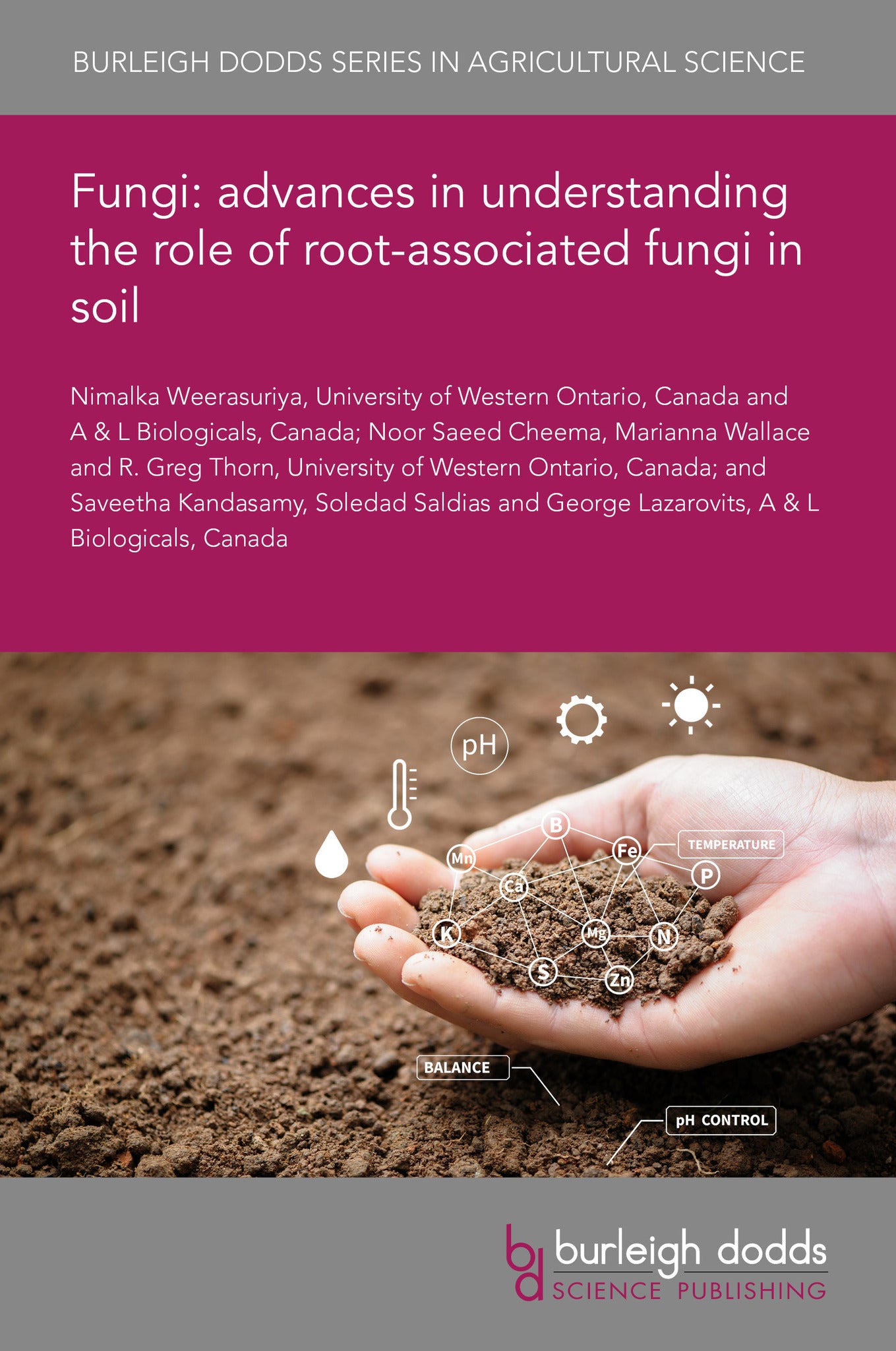We're sorry. An error has occurred
Please cancel or retry.
Fungi: advances in understanding the role of root-associated fungi in soil

Some error occured while loading the Quick View. Please close the Quick View and try reloading the page.
Couldn't load pickup availability
- Format:
-
29 May 2025

This chapter highlights the varied roles that root-associated soil fungi play in agricultural ecosystems. The authors begin by describing the relationship between fungi with plants before detailing the beneficial, antagonistic, and dynamic interactions between the two. Next they present an overview of methods for detection, identification, and analysis of communities of root-associated fungi. The authors then explore two crop root mycobiomes case studies: root and rhizosphere mycobiomes in corn and winter wheat, and the use of fungi isolated from high-yielding soil to improve crop performance in low-yielding soils. Finally, they examine the methodological considerations for the use of barcoding gene regions and sequencing platforms for fungal metabarcoding.

TECHNOLOGY & ENGINEERING / Agriculture / Agronomy / Soil Science, Soil science and management, TECHNOLOGY & ENGINEERING / Agriculture / Agronomy / Crop Science, TECHNOLOGY & ENGINEERING / Agriculture / Sustainable Agriculture, Agronomy and crop production, Sustainable agriculture

- 1 Introduction: root and rhizosphere mycobiomes
- 2 Overview of methods for community analyses: studying the mycobiome
- 3 Case study 1: root and rhizosphere mycobiomes in relation to yield in corn and in corn and winter wheat
- 4 Case study 2: using fungi isolated from high-yielding soil to improve crop performance in low-yielding soils
- 5 Detailed methodological considerations in mycobiome analyses
- 6 Future trends in research
- 7 Conclusion
- 8 Where to look for further information
- 9 References



